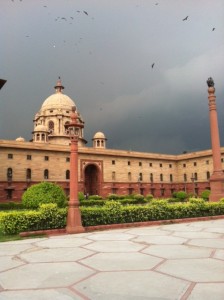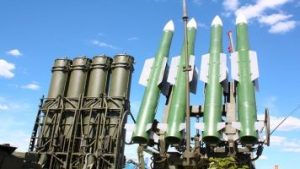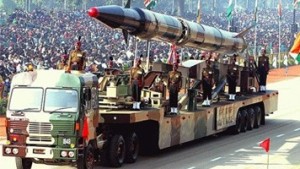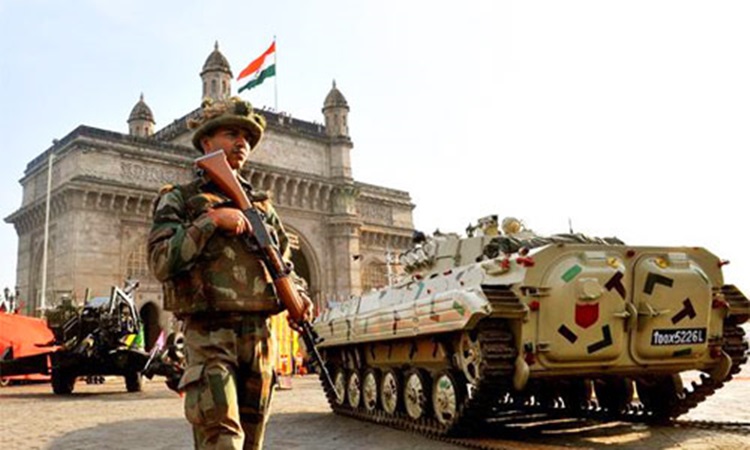There is something quite inexplicable about management of capital budget allocated to the armed forces. As a result, despite spending more than 5 lakh crore between 2002-03 and 2015-16, critical gaps in military capability persist. The focus is more on spending the money rather than the nature of outcomes, often without satisfactory results on either of the two counts.
 For the past several years, the Ministry of Defence (MoD) has been getting far less than what it asks for but, ironically, it ends up underutilising whatever allocations are made at the beginning of the year. This is amply highlighted in a report submitted by the Standing Committee on Defence as recently as on 03 May 2016.
For the past several years, the Ministry of Defence (MoD) has been getting far less than what it asks for but, ironically, it ends up underutilising whatever allocations are made at the beginning of the year. This is amply highlighted in a report submitted by the Standing Committee on Defence as recently as on 03 May 2016.
The underutilisation has gradually been increasing over the years and so is the case with the actual expenditure. In 2011-12, MoD managed to spend Rs 63,000 crore which climbed up by just about Rs 10,000 crore in 2014-16.
The final figures for 2016-17 are not available as yet but going by the expenditure figures till the end of January 2016, this year could possibly witness the largest underutilisation in the recent years and a deceleration in actual expenditure with reference to the previous year. (See Table)
| Capital Budget of Services (Rs in crore) | ||||
| Year | Projected Requirement | Budget Estimates | Revised Estimates | Actual Expenditure |
| 2011-12 | 88680.38 | 64150.55 | 61199.55 | 63000.52 |
| 2012-13 | 93828.31 | 74518.67 | 64533.67 | 65500.68 |
| 2013-14 | 123911.50 | 81241.70 | 73136.67 | 73407.07 |
| 2014-15 | 132597.69 | 84076.95 | 74151.29 |
73652.81
|
| 2015-16 | 104398.76 | 86032.41 | 74412.68 | 56333.21* |
(* Expenditure up to the end of January 2016)
Some would argue that underutilisation of funds is not on account of MoD’s inability to spend but because of the allocation being arbitrarily reduced by the Ministry of Finance (MoF) at the revised estimate stage. This view overlooks certain facts.
In the run up to preparation of the annual budget MoF holds discussions with MoD towards the end of the third quarter, takes stock of the progress of the ongoing procurement cases, and make an estimate of funds required for meeting committed liabilities as also for making payment against the new contracts likely to get signed during the remaining three months of the financial year.
The amount so estimated is left with MoD while the balance amount likely to remain unspent is withdrawn by reducing the allocation. This is borne out by the fact that India has never defaulted on payment of committed liabilities. There is no evidence of any procurement programme being cancelled because of non-availability of funds.
The expenditure figures for 2015-16 also illustrate this. As can be seen from the Table, at the end of January 2016, more than 35 per cent of the allocation was yet to be spent. Having spent Rs 74,412.68 crore in the previous ten months, it was unlikely that the balance allocation of Rs 29,699.20 crore would have got spent in the remaining two months of the fiscal, which is why the allocation was apparently reduced.

Be that as it may, this worrisome trend of underutilisation assumes significance because modernisation-related acquisitions are funded from the capital budget. In 2015-16 allocation for capital acquisition accounted for more than 80 per cent of the total capital budget of the Indian Army. For Indian Navy and the Indian Air Force, it accounted for 97 and 93 per cent respectively. These ratios will not be very different for the preceding years or the current year.
There is clearly a need to ensure that the allocated funds are fully utilised. After possibly all time high underutilisation in 2015-16 (at the end of February 2016 also a sum of Rs 24,735.84 crore, or 28.75 per cent of the budgetary allocation, was yet to be spent) this should be a top priority for the ministry.
As in the past, against the projected requirement of Rs 1,09,449.90 (including the requirement of the National Cadet Corps, Military Farms, Rashtriya Rifles, and Ex-servicemen Contributory Health Scheme) for 2016-17, a sum of Rs 78,731.32 crore has been allocated. This means that there is a shortfall of Rs 30,718.58 crore.
This shortfall should not come in the way of initiating/pursuing important procurement proposals as availability of funds is not a pre-requisite for processing a case till it reaches the stage of contract conclusion. Even at this stage, it is not necessary that MoD should have the entire amount for which the contract is to be signed in its kitty.
Normally, ten to fifteen per cent of the contract value is paid in advance after signing the contract and the remaining payment is made over the entire delivery period, usually spread over several years. The question is whether sufficient funds are available during 2016-17 even for making such advance payments.
The Standing Committee has noted in its report of 03 May 2015, that a total sum of Rs 8,590.37 crore is available this year for new schemes. This should be good enough to conclude contacts worth Rs 85,900 crore if the advance against those contracts is paid at the rate of 10 per cent of the contract value, but only Rs 57,000 crore or so if it is paid at the rate of 15 per cent.
According to the reply given to a question in the Lok Sabha on 11 March 2016, the total value of contracts signed during 2014-15 was Rs 64,859.52 crore. This came down to Rs 39,955.36 crore in 2015-16, presumably till the date on which reply to the unstarred question was tabled. Going by this trend, the amount available this year for signing new contracts will not be grossly inadequate as MoD will be able to sign contracts worth Rs 57,000 to 85,900 crore. But there is a catch.
It seems this year full allocation has not been made even for meeting the committed liabilities. As per the Standing Committee report there is a shortfall of Rs 12,142.88 crore under the committed liability segment of the capital acquisition budget.

Considering that MoD cannot default on making contractual payments, which constitute the committed liabilities, it is an extremely worrisome situation. Funds will either have to be diverted from the new scheme segment or from other capital budget heads, such as land and construction. Either way, it will have an adverse impact on capital acquisitions and/or infrastructure development.
This is a distinct possibility unless MoF doles out more funds at the revised estimate stage or even earlier. But get additional funds, or even to avoid the allocation being reduced at in the revised estimates, MoD will have to expedite utilisation in the next couple of months so that when MoF reviews the budget at the end of the third quarter it finds no justification for reducing the allocation and, on the contrary, is left with no option but to allocate more funds.
(Disclaimer: The views and opinions expressed in this article are those of the author and do not necessarily reflect the official policy or position of BharatShakti.in)






















